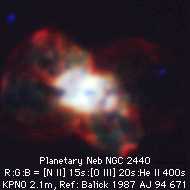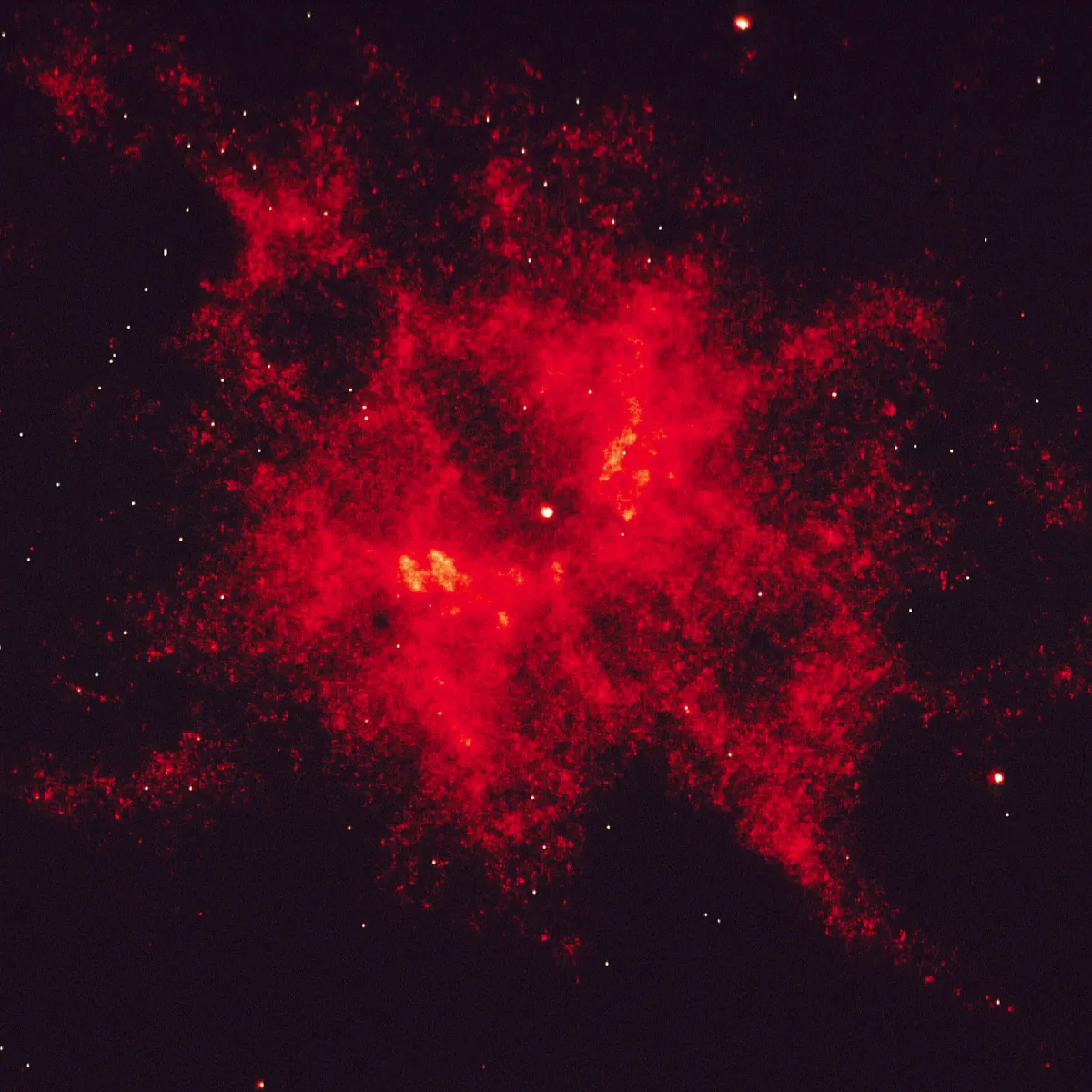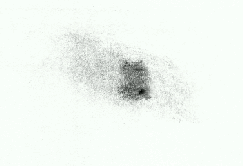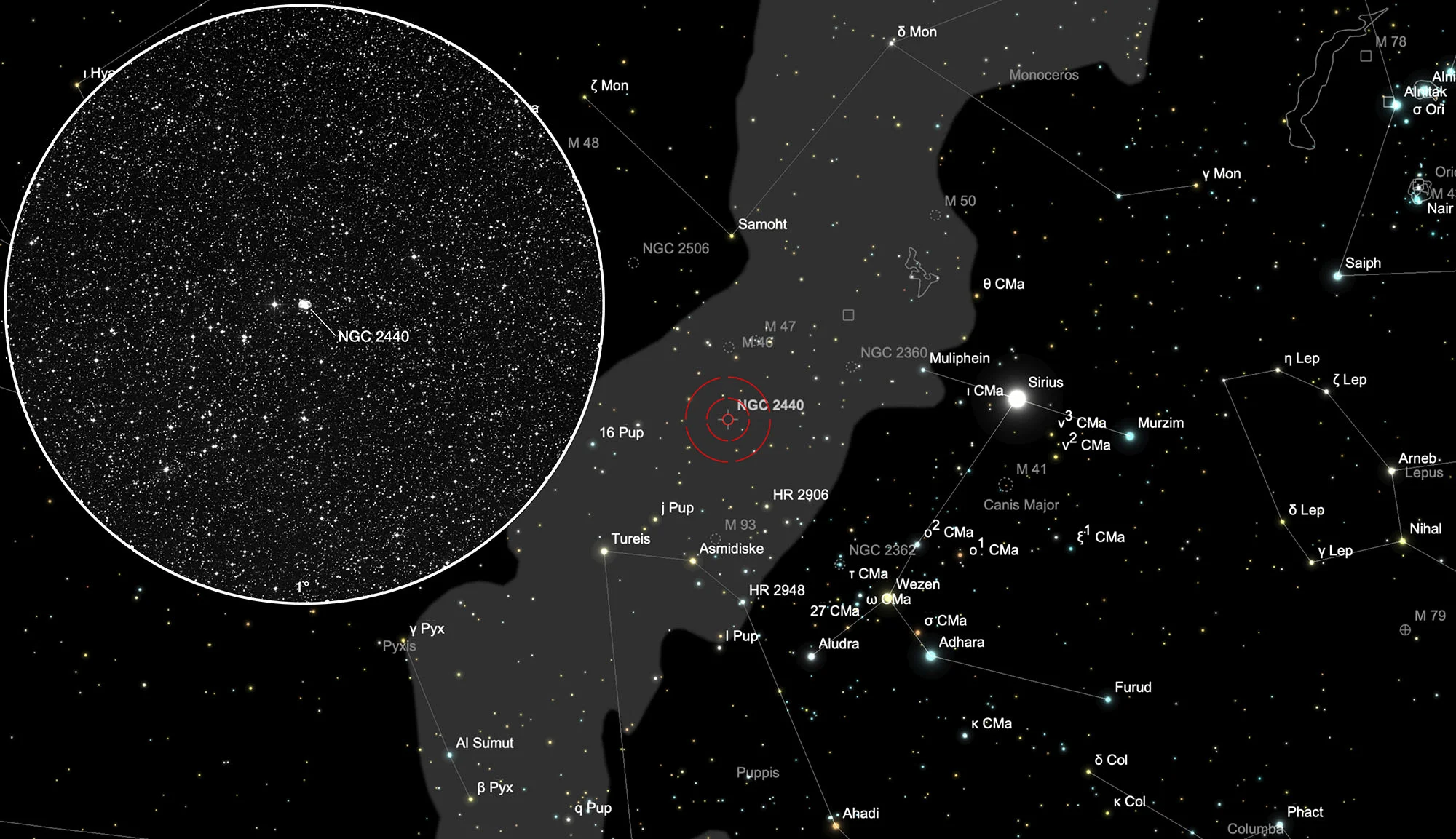Insect Nebula (NGC 2440)

Object Description
NGC 2440 is a very complex planetary nebula (PN) about 1600 light-years away. An inner, bright area with two condensations can be seen, which is embedded in a fainter, much larger nebula structure (halo). Since the inner part of the PN is very different from the outer part, it is assumed that the two areas arose in different ways in different periods of time. The complex structures can already be explained surprisingly well with models. In the Vorontsov-Velyaminov classification scheme, NGC 2440 is recorded as a PN with an irregular shape and brightness distribution (V+III).
The object's central star is one of the hottest stars known. Observations with various large telescopes (HST, Kitt Peak, AAT) and the ultraviolet satellite IUE revealed a surface temperature of 125'000 Kelvin! It is a white dwarf with almost one solar mass. Despite its 250 times the Sun's luminosity, it appears to us only as a 17.7 mag faint point. The study of the star is also made more difficult by the bright surrounding nebula, so that only the largest telescopes on earth and the Hubble Space Telescope can be used to observe it (see Fig. 2).


| Designations | PN G234.8+02.4: NGC 2440, PK 234+02.1, ARO 47, ESO 560-09, Sa 2- 14, VV 45, VV' 71 |
| Right Ascension (J2000.0) | 07h 41m 55s |
| Declination (J2000.0) | -18° 12' 33" |
| Dimensions | 16." (optical), 18." (radio) |
| Distance | 0.7 kpc |
| Radial Velocity | +63.0 ± 3.0 km/s |
| Expansion Velocity | 22.5 (O-III) km/s |
| C-Star Designations | AG82 88, BD -17 2105, CSI -17 02105, GCRV 5132, HD 62166 |
| C-Star Magnitude | V: 17.65 |
| Discoverer | HERSCHEL 1790 |
How to find the Insect?
The planetary nebula NGC 2440 is located in the constellation of Puppis, the aft deck of the Argo Navis. To find it, focus on the open star cluster M 46 and swivel the telescope almost 3.5 degrees to the south! Tip: Of course, the PN fan will not fail to note the two rings NGC 2438 and M1-18 for M 46. Due to its southern location, the best observation time is around January.
Visual Observation

200 mm aperture: As with most PNs, it is worth using high magnification. The inner area has the outline of a gummy bear. A slight increase in brightness can be seen at the northern and southern edges. A kind of stellar brightening is noticeable on one side. The bear is surrounded by an extended, diffuse halo. The evenly bright halo has the shape of an ellipse whose major axis is slightly tilted to the east-west line.
At a magnification of about 340x, no star was visible in the entire field of view. As described above, the faint central star is beyond the capabilities of an amateur telescope.
